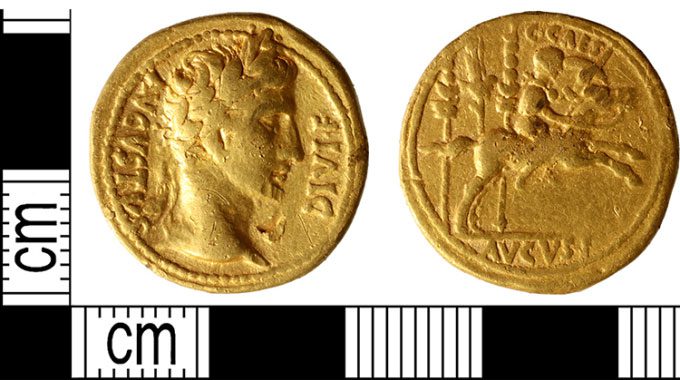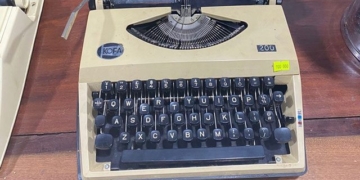11 Roman Gold Coins Discovered in a Field in Norfolk, Each with a Small Dent for Purity Testing.
Metal detectorists uncovered a hoard of Roman gold coins in a field in Norfolk, near the eastern coast of England, as reported by Live Science on July 12. To date, a total of 11 coins have been excavated, and experts remain hopeful of finding more in the future. This discovery was recently published in the journal Searcher.

Front and back of a Roman coin found in Norfolk. (Photo: Adrian Marsden)
Two metal detectorists, Damon and Denise Pye, found the first four gold coins in 2017 after a local farmer finished plowing the fields at the end of the harvest season. “The coins were scattered throughout the plowed earth. The soil is disturbed year after year, continuously turning over, which eventually causes the coins to rise to the surface,” said Adrian Marsden, an expert in ancient Roman coins at the Norfolk County Council.
Marsden identified the gold coins as dating from around the mid-1st century BC to the 1st century AD. Notably, all the coins were minted before the Roman invasion of Britain in 43 AD. This raises the question: Why did these gold coins appear in the field years before the Romans arrived?
Marsden offered several explanations, although he is not certain. “It’s possible the gold coins were a form of offering to the gods, but it is more likely that someone buried them with the intention of retrieving them later. Gold was often used for trade, so it’s possible a local tribe acquired these coins and intended to use them for other purposes, like melting them down to make jewelry,” he said.
Marsden noted that there are two types of coins. The first type features a portrait of Augustus Caesar, the first emperor of Rome, on one side, with Gaius and Lucius, his grandsons and heirs to the throne (both of whom died before they could ascend), depicted on the other side. The second type also shows Augustus on one side, but the other side features an image of Gaius on horseback.
Each coin also has a small dent on the top, indicating that someone may have tested the purity of the coin after it was minted. “They are 20-carat gold (a measure of purity) of high quality,” Marsden stated.
Scratching the surface of gold coins was quite common in the Roman Empire, where there were many fakes, according to Marjanko Pilekić, a coin expert at Schloss Friedenstein Gotha (Germany). “Some scratches are even right on the portrait of Augustus. This helped them check whether the coins were genuinely gold or just gold-plated,” he explained.

















































